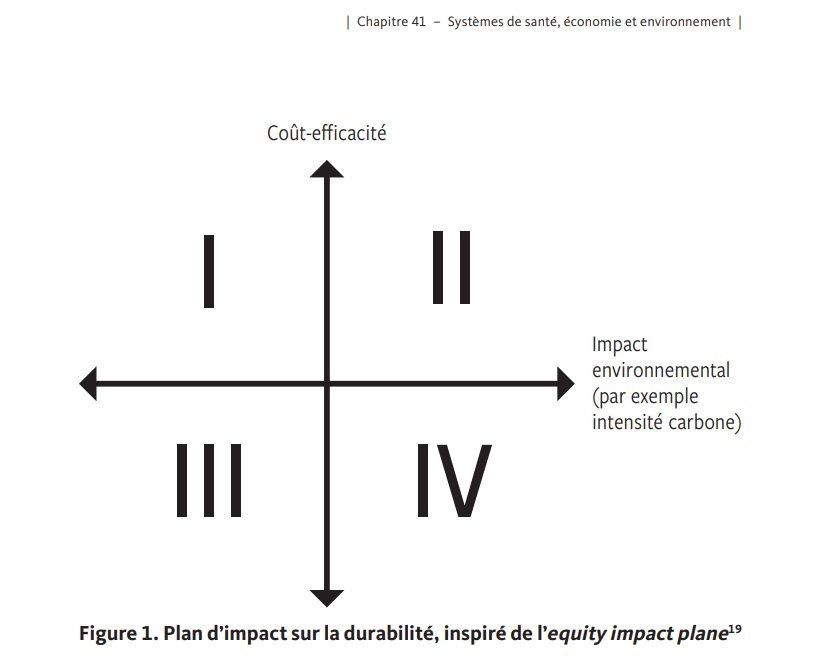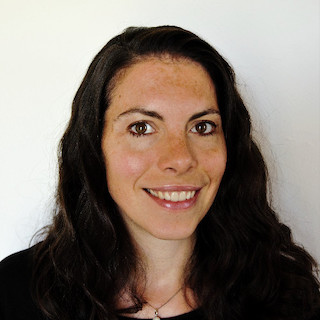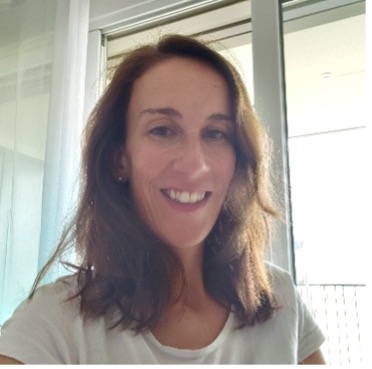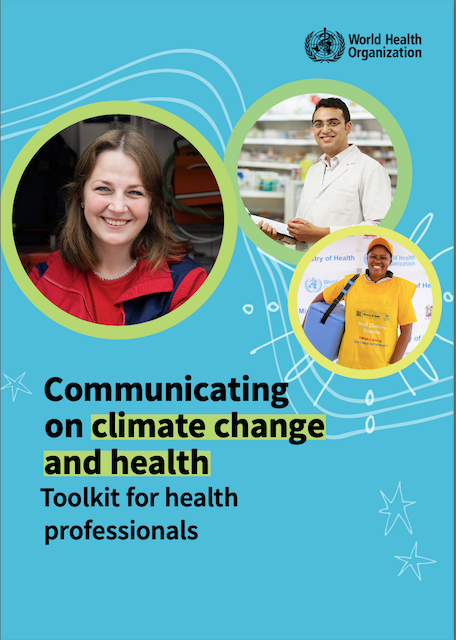
Clinical Decision-Making and Climate Advocacy in Physiotherapy Education
Introduction
The School of Health Sciences of Lausanne (HESAV – Haute Ecole de Santé Vaud) is a school of health sciences within the University of Applied Sciences and Arts Western Switzerland (HES-SO). Among its academic programmes, HESAV offers a professional training programme in physiotherapy: a full-time, six-semester Bachelor of Science HES-SO in Physiotherapy (3 years, 180 ECTS). In Switzerland, a bachelor’s degree is required to practice as a physiotherapist. It can be complemented by a master’s degree such as the Master of Health Science HES-SO/UNIL with a specialization in Physiotherapy, and a doctoral programme.
The course we are describing here takes place in the fifth semester of the previously mentioned Bachelor’s programme in Physiotherapy, within a compulsory module on chronic conditions titled “chronicity: person-centred approaches”.
The aim of this four-period course, titled “Chronicity: Therapeutic Efficiency // Climate Change and Health – How to Communicate as a Health Professional?”, is twofold:
To integrate environmental criteria into the clinical decision-making process, illustrated through a case study
To develop evidence-based arguments and communication strategies for healthcare professionals, applied to chronic disease management
Course content
A clinical case study is presented to students, featuring a young man diagnosed with prediabetes seeking physiotherapy for progressive knee pain.
Part 1: Environmental Considerations in Clinical Decision-Making
The first section establishes the link between environmental degradation and the incidence and prevalence of type 2 diabetes (Senn et al., 2023). It also highlights evidence supporting the potential for reversing this condition through lifestyle modifications (Lagger et al., 2018; Zhang et al. 2023).
Students then engage in an evidence-based exercise (or classification exercise), identifying and evaluating treatment options based on both clinical cost-effectiveness (high-value vs. low-value care) and environmental impact (i.e. natural ressources needed, Co2 emissions). Treatments options chosen for the prediabetes diagnostic as well as the knee pain problem were identified and classified according to the literature suggested by the lecturers (“Médicaments pour traiter le diabète de type 2”, 2017; Struthers et al., 2024; Zhang et al., 2022) or any other. They classify these options using an adapted version of the Health Equity Impact Plane by Senn et al. (2022), which organizes interventions based on cost-effectiveness (vertical axis) and environmental impact (horizontal axis) (sea Figure 1.)

Image: Senn et al. (2022)

Fanny Poget (MSc)
Maître d’enseignement, HESAV Lausanne
Fanny enseigne en physiothérapie principalement dans le domaine musculo-squelettique, avec un intérêt particulier pour le raisonnement clinique, l’autonomisation des patients, l’activité physique, ainsi que par les enjeux futurs de la profession en lien avec la santé publique, tels que durabilité et efficience thérapeutique.

Sarah Thouvenin (MSc)
Maître d’enseignement, HESAV Lausanne, HESAV Lausanne
Sarah enseigne principalement le raisonnement clinique et en simulation. Spécialisée dans la santé de la femme et du nourrisson, elle favorise une approche globale du patient et attache une grande importance à l’intégration des principes de durabilité dans le développement de la physiothérapie de demain.
The framework guides decision-making:
Quadrant I (high cost-effectiveness, low environmental impact): represents the most recommended interventions, to keep and suggest in priority to the patients (sort of “win-win” situations). In this case study, treatment options such as aerobic exercises, active transports, green space exposure or psychological support were suggested by students.
Quadrant IV (low cost-effectiveness, high environmental impact): represents the avoidable interventions, due to both clinical inefficacy and/or important costs and excessive environmental burden (e.g., CO₂ emissions, resources consumption). For this case study, therapies suggested in this quadrant were knee related surgery (meniscectomy, arthrology), imaging for the knee (MRI) or premature insulin intake.
Quadrants II and III: Require further discussion, where explicit benefits or drawbacks for health and the environment can help clinicians and patients refine their decision-making. In the quadrant II for example, were suggested some medication (metformin) and some nutritional changes. In quadrant III insulin and DPP-4 inhibitors were discussed, in connection with the cost to the environment and the questionable indication of these drugs as first-line treatment.
After conducting personal research in groups of three to four, each group shares their findings with the rest of the class, fostering discussion. This classification exercise encourages students to critically assess treatment options such as exercise, medication, and nutrition, considering not only their clinical validity but also their resource requirements, production processes, and life cycle assessments (when available). The discussions that emerged from this activity were insightful, reinforcing the importance of a multidimensional approach to physiotherapy and chronic conditions.
Part 2: Communication Strategies and Climate Advocacy
The second section introduces the World Health Organization (WHO) toolkit, “Communicating on Climate Change and Health: A Toolkit for Health Professionals (WHO, 2024).” This guide provides evidence-based strategies for health professionals to advocate for climate action.
To apply the principles outlined in the WHO guide, students participate in role-playing exercises for two scenarios:
Clinical consultation: Engaging in motivational interviewing (Rollnick et al, 2010) with the previously introduced prediabetes and knee pain case study, focusing on lifestyle modifications.
Institutional advocacy: Developing and presenting an argument to secure funding for a sustainable physiotherapy project within a hospital setting.
Students particularly valued the integration of motivational interviewing techniques, which they had previously studied in the module. This exercise reinforced the application of these communication skills in a new context. However, additional preparation and time allocation could enhance the depth and impact of this activity in future iterations. Incorporating a simulated patient or a structured interview scenario could make the exercise more engaging and meaningful. In the future, this approach could also be applied to a real sustainable project within HESAV, such as implementing a therapeutic garden, introducing vegetarian menus in the cafeteria, or pursuing other health promotion initiatives.
Conclusion
The clinical classification exercise proved highly effective in fostering critical thinking, encouraging students to evaluate treatment options not only based on clinical outcomes but also on their environmental impact. Discussions on production processes and resource consumption were particularly valuable. Students were often very surprised of the complexity of all the clinical decision-making components.
The communication component on climate change and health was also well received, especially the application of motivational interviewing in regard of this clinical case study. However, to maximize its effectiveness, additional time and preparation may be necessary in future iterations. Ideally, this exercise could be adapted to a simulation, a patient-partner scenario, or a real health promotion initiative. Additionally, online exchanges with other universities would provide valuable opportunities to compare perspectives and foster discussions on these topics.
References
Header image from: https://www.un.org/en/climatechange/communicating-climate-change
Cookson, R., et al. (2017). Using cost-effectiveness analysis to address health equity concerns. Value in Health, 20(2), 206–212. https://doi.org/10.1016/j.jval.2016.11.027
Lagger, G., Correia, J. C., Fernandes, C., Sittarame, F., & Golay, A. (2018). A 5-dimension patient education program targeting type 2 diabetes remission. Éducation Thérapeutique du Patient, 10(1). https://doi.org/10.1051/tpe/2018018
Rollnick, S., Butler. C. C., Kinnersley, P., Gregory, J. et Mash, B. (2010). Motivational interviewing. British Medical Journal, 340, c1900. https://doi.org/10.1136/bmj.c1900
Senn, N., Gaille, M., del Rio Carral, M. & Gonzalez Holguera J. (2022) Santé et environnement : Vers une nouvelle approche globale. Chêne-Bourg : RMS éditions / Médecine et Hygiène
Struthers, N.A., Guluzade, N.A., Zecevic, A.A., Waldon, D.M. & Gunz, A. (2024). Nature-based interventions for physical health conditions: A systematic review and meta-analysis. Environmental Research, 258, 119421. https://doi.org/10.1016/j.envres.2024.119421
Médicaments pour traiter le diabète de type 2. (2017). Medical Letter : Édition Française, 39 (4), 23-34.
World Health Organization (2024). Communicating on climate change and health : Toolkit for health professionals. Geneva: World Health Organization; 2024. Licence: CC BY-NC-SA 3.0 IGO. WHO communicating on climate change and health toolkit for health professionnals.pdf
Zhang, Y., Yang, Y., Huang, Q., Zhang, Q., & Li, M. (2023). The effectiveness of lifestyle interventions for diabetes remission on patients with type 2 diabetes mellitus: A systematic review and meta-analysis. Worldviews on Evidence-Based Nursing, 20, 64–78. https://doi.org/10.1111/wvn.12608
Prenez contact / Get in touch
🇨🇭 🇫🇷 🇧🇪 + Nous serions ravis d’avoir de vos nouvelles et de poursuivre la conversation sur notre enseignement des cours facultatifs en santé planétaire. Si vous avez des commentaires, des questions ou des idées que vous souhaitez partager avec nous, veuillez contacter Fanny Poget par e-mail ou utiliser le formulaire de commentaire ci-dessous.
🇬🇧 We would love to hear from you and continue the conversation about our elective courses in planetary health. If you have any feedback, questions or ideas that you would like to share with us, please contact Fanny Poget via email or use the comment form below.


0 Comments